Petzyo Top Breed Guide
Cavoodle
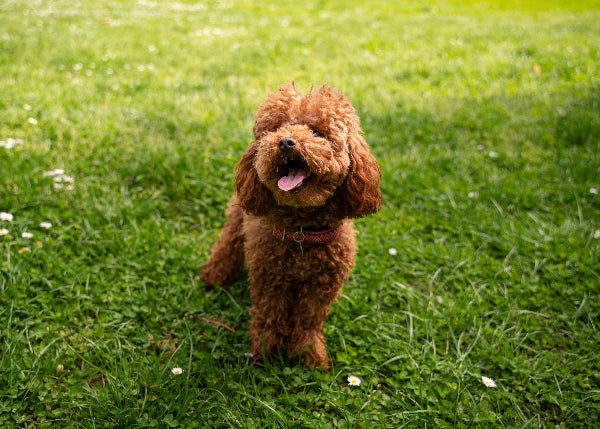
QUICK FACTS
Height: 28–35 cm
Weight: 5–12 kg
Lifespan: 12–15 years
Coat Type:
Soft, wavy to curly coat
Colour Variations:
Cream, gold, chocolate, black, apricot, and tricolour
Energy Level:
Moderate to high
Grooming Needs:
Moderate to high depending on coat type – regular brushing and professional grooming needed
- Breed Overview
- Physical & Appearance
- Personality
- Health & Diet
- Grooming & Care
- Cost & Owership
What is a Cavoodle?
A Cavoodle is a cross between a Cavalier King Charles Spaniel and a Poodle (usually Toy or Miniature). Known for being affectionate, intelligent, and low-shedding, Cavoodles are a popular choice for families and individuals alike.
They’re one of the oldest Poodle mixes, believed to have first appeared in the 1950s, likely from an accidental mating. The first officially recorded litter was born in Australia in the 1990s, leading many to recognise the Cavoodle as an Australian designer breed.
The breed is called Cavoodle in Australia and the UK, and Cavapoo in the US—but both names refer to the same breed.
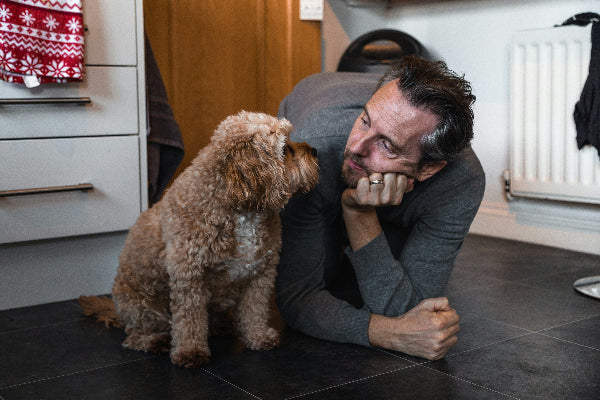
BREED SUMMARY
Cavoodles are cuddly, clever, and full of heart—making them a great match for many Aussie homes. With the right care, training, and attention, they’ll return your love tenfold. Whether you're ready to welcome one into your life or still weighing things up, knowing what to expect helps you make the best choice—for you and your future furry mate.
Their small size, friendliness, playful temperament, intelligence and eagerness to please their pawrents make them among the easier breeds to train. Whether you live in a small apartment or a busy household, they can adjust with ease.
While they don't shed as much as other breeds, their coat still requires high care, including frequent brushing and grooming. They flourish with owners who can provide consistency, presence, and care. Before bringing one home, take an honest look at your lifestyle and time.
Supporting their well-being starts with proper nutrition. A diet that supports their skin, heart, and joint health is especially important for a breed with a long coat and prone to heart conditions and joint issues. That’s why we offer premium dog food, crafted with real meat and an optimal omega-3 to omega-6 ratio.
Coat type
Coat length
Appearance & Physical Characteristics
Cavoodles are crossbreeds, meaning they can inherit any colour seen in their parent breeds, the King Charles Cavalier Spaniel and the Poodle. As a result, Cavoodles can showcase a captivating palette, ranging from rich browns and golden hues to striking black and white combinations. Their coats may also vary, featuring everything from soft, wavy curls to smooth, silky textures.
Tips: Lighter colours, such as cream or white, may show dirt sooner, while darker colours can absorb more heat—something to consider in warmer months.
Cavoodle Colours & Markings
Cavoodle colours come in a wide range: apricot, red, black, white, cream, tricolour, blenheim, and parti (bi-colour).
Cavoodles can also have markings which are most frequently solid in colour, though some can be phantom, parti or tuxedo pattern.
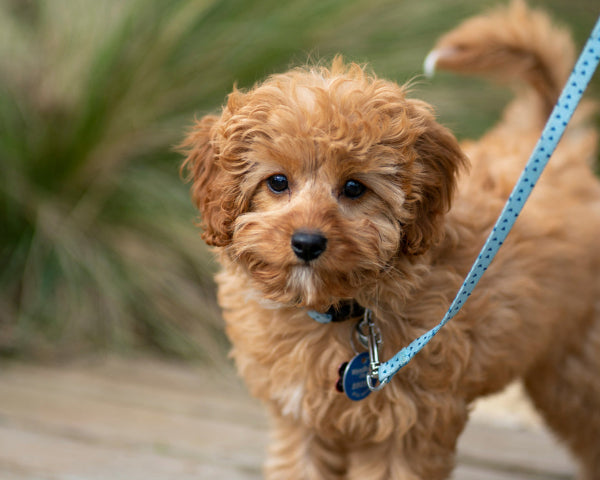
Apricot
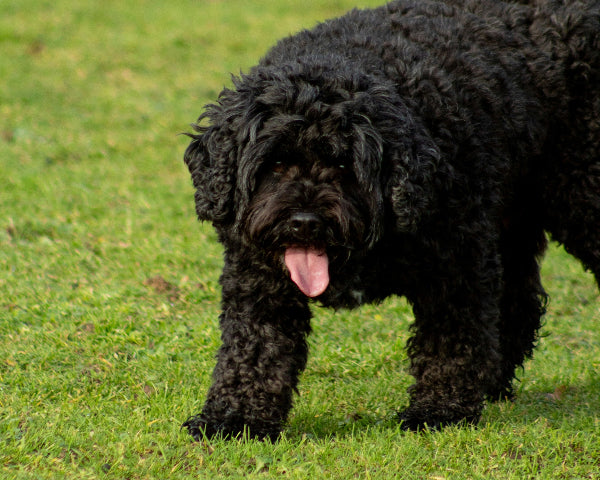
Black
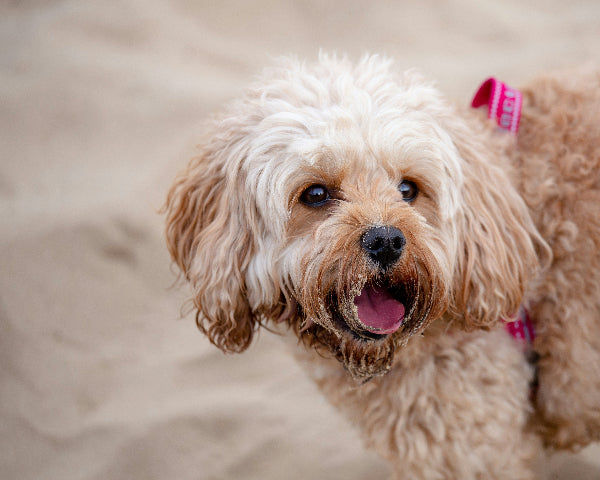
Cream
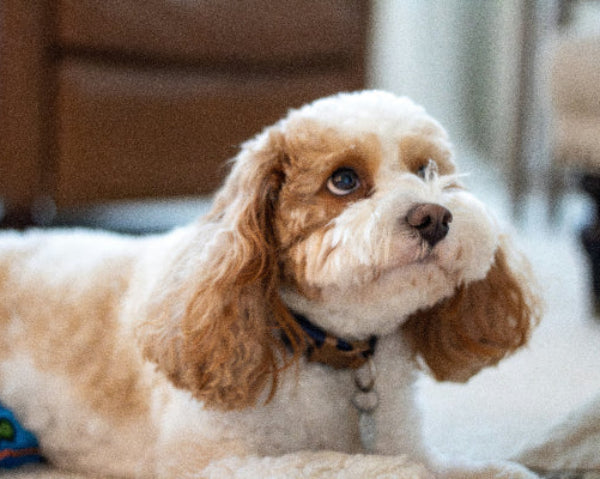
Parti (bi-colour)
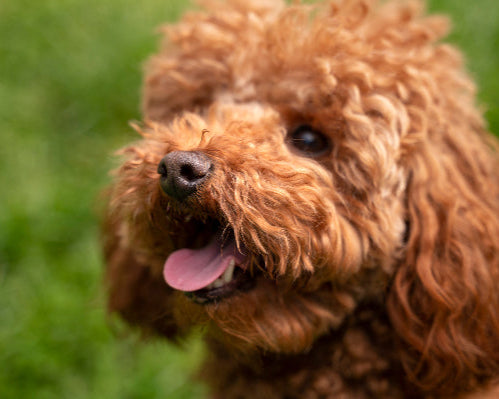
Red
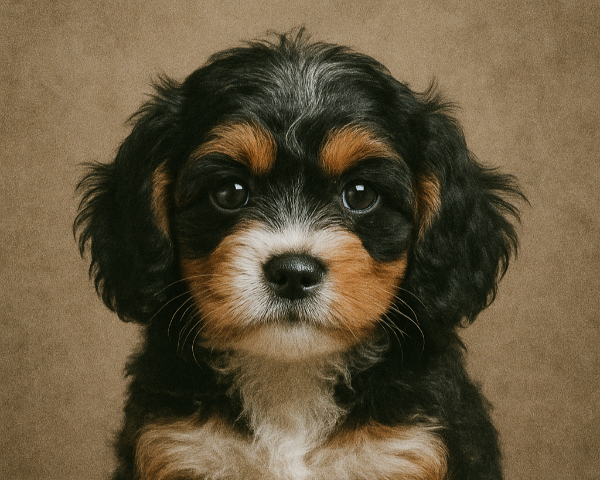
Tricolour
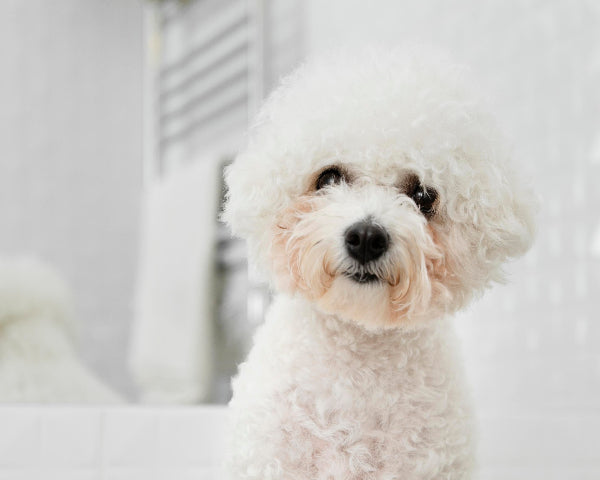
White
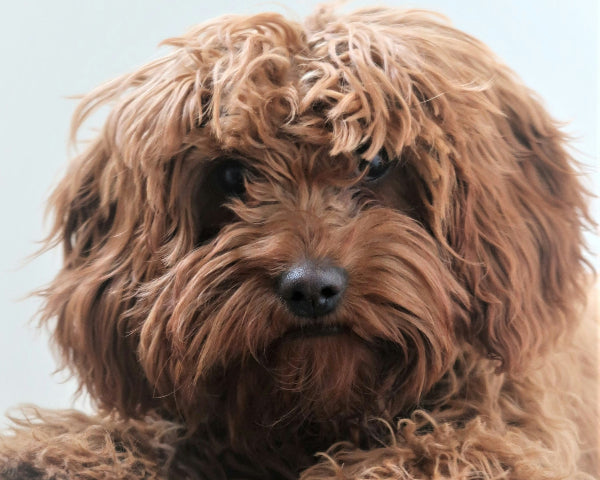
Solid
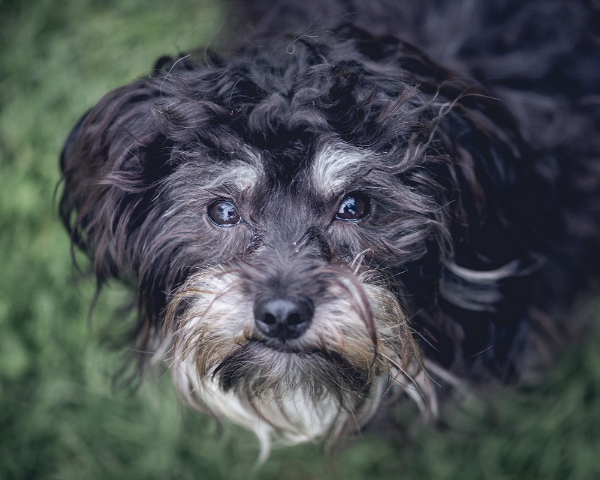
Phantom

Parti
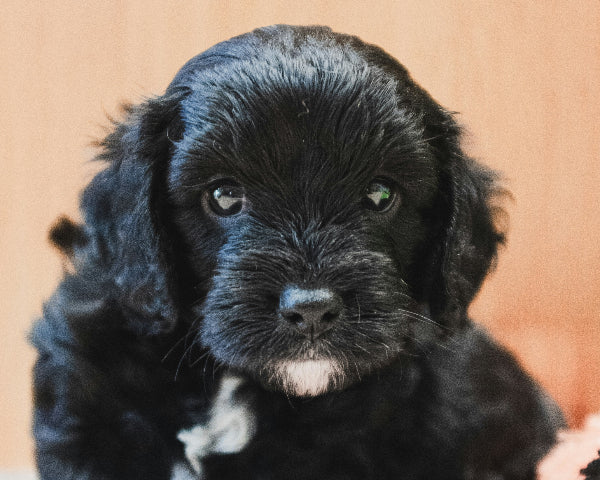
Tuxedo
Affectionate with family
Good with kids
Social doggos
Playfulness
Cavoodle Temperament and PERSONALITY
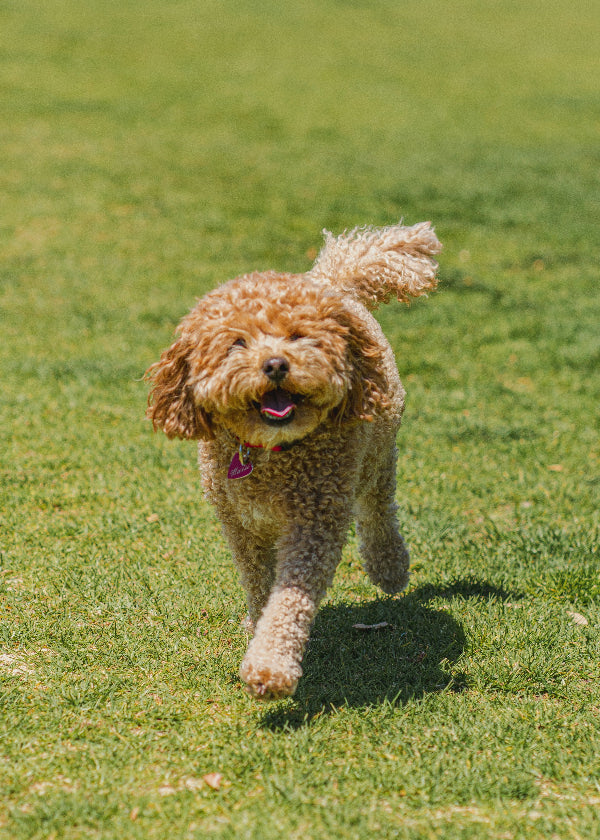
Cavoodles are known for their friendly, gentle nature and strong desire to be around people. They thrive on companionship and are often described as emotionally intuitive—quick to sense their owner’s mood and eager to offer comfort.
What is the Cavoodle Temperament Like?
The Cavoodle temperament is best described as gentle, social, and easy-going. These dogs are happiest when they’re around their humans and tend to form strong bonds with every member of the household.
- With children and families: Cavoodles are patient and playful, making them great playmates for kids. They’re not overly excitable but enjoy attention and affection.
- In apartments vs large homes: They adapt well to both environments. Daily walks and playtime are usually enough to keep them content in smaller spaces.
- With other pets: Cavoodles are generally friendly with other dogs and even cats, especially when introduced early.
- During travel or vet visits: They tend to handle change and unfamiliar environments better than many small breeds, especially when well-socialised from a young age.
- Training and learning: They respond well to positive reinforcement and are quick learners. However, if under-stimulated, they may show stubbornness or attention-seeking behaviours.
Behaviour Challenges
- Can become clingy or anxious if left alone too often
- Responds well to training, though a touch of stubbornness can show
- Benefits from early exposure to people, pets, and new settings to build confidence
Cavoodle Lifespan & Health Overview
Understanding your Cavoodle’s lifespan and health needs is essential to providing them with a long, happy life.
In this section, we’ll cover how long Cavoodles live for, what affects their lifespan, and the most common Cavoodle health issues to watch for—so you know what to expect and how to stay proactive.
Cavoodle Lifespan: How Long Do Cavoodles Live For?
The average Cavoodle lifespan is 12–15 years, depending on factors like genetics, overall care, and environment.
The lifespan reflects traits inherited from both parent breeds:
- Cavalier King Charles Spaniels typically live 9–14 years
- Poodles, especially the smaller Toy and Miniature varieties, can live 12–16 years or longer
Smaller Cavoodles, particularly Toy Cavoodles, often outlive their Mini counterparts due to the size-to-longevity correlation commonly seen in small breeds. With proper nutrition, regular vet checkups, and a healthy lifestyle, many Cavoodles live well into their senior years.
Common Health Problems in Cavoodles
Like many designer breeds, Cavoodles may inherit specific genetic conditions. Below are the most common Cavoodle health issues owners should be aware of:
1. Mitral Valve Disease (MVD)
A progressive heart condition affecting the valve between heart chambers, leading to reduced blood flow and build up of fluid in the lungs. This heart disease is common in both Cavaliers and Poodles and is heritable, meaning it is in the genes from parent to offspring. Symptoms usually occur in older dogs, and include coughing, laboured breathing, fatigue and weight loss. MVD may progress to heart failure. While many dogs with mild MVD may never develop congestive heart failure, treatments are available to slow progression, manage symptoms and improve quality of life.
2. Eye Conditions (Cataracts & Progressive Retinal Atrophy)
Cavoodles are at risk of vision problems such as:
- Cataracts are cloudy lenses that develop over time and may result in vision problems with old age. If severe, some cases can be surgically treated.
- Progressive Retinal Atrophy (PRA) is a genetic condition and leads to gradual vision loss and is not curable. It is important to ask about DNA testing done on parents to reduce these inherited conditions.
3. Hip Dysplasia
Hip dysplasia occurs when the hip joint doesn’t form properly, causing the femur to sit loosely in the socket. Over time, this can result in arthritis, pain, and lameness. Symptoms may include limping, stiffness after exercise, or reluctance to climb stairs.
Special X-Rays called ‘PennHIP’ is a screening method available as early as 16 weeks of age to check if puppies are susceptible to hip dysplasia. When discussing PennHIP with a breeder, ask if they are able to provide scores of both parents.
4. Luxating Patella
Cavoodles may have dental misalignment, leading to overcrowded teeth and plaque. Baby teeth may need removal, which can easily be done at the time of desexing. Regular dental care is essential.
5. Syringomyelia
This is a rare neurological condition where fluid builds up in the spinal cord due to skull malformation related to the Cavalier breed. Symptoms include neck pain, yelping, or sensitivity around the head. Immediate veterinary attention is needed if signs appear.
Feeding & Nutrition for a Cavoodle
Cavoodles are small-sized mixed-breed dogs with moderate activity levels, so their diet must be complete and balanced.
Food Options for Cavoodles:
- Premium dry kibble for small breeds with omega-3 and joint support
- Wet food with real meat and no fillers
- Raw diets with pre-portioned protein, organs, bone, and veg (e.g., kangaroo, chicken, beef)
Choose products with transparent labelling and AAFCO or NRC compliance.
Foods to Avoid
When feeding your dog, it's just as important to know what to exclude from their diet. Certain foods, even in small amounts, can be toxic and lead to serious health issues, regardless of your dog’s size. Always keep the following items off your dog’s menu:

Chocolate
Contains theobromine, toxic to dogs (especially dark varieties)

Grapes and raisins
They can cause kidney failure
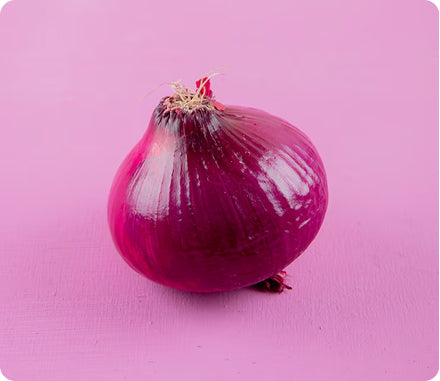
Onions and garlic
Damage red blood cells
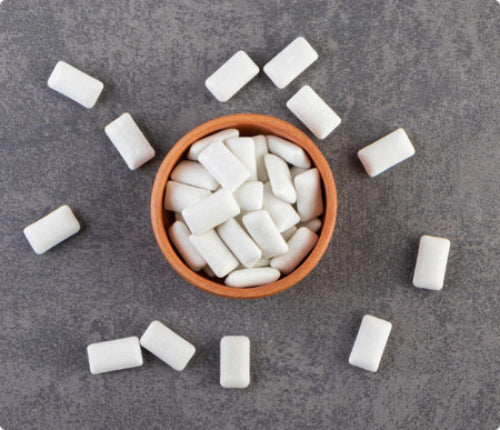
Alcohol, caffeine, and Xylitol
Can cause liver failure and insulin spikes
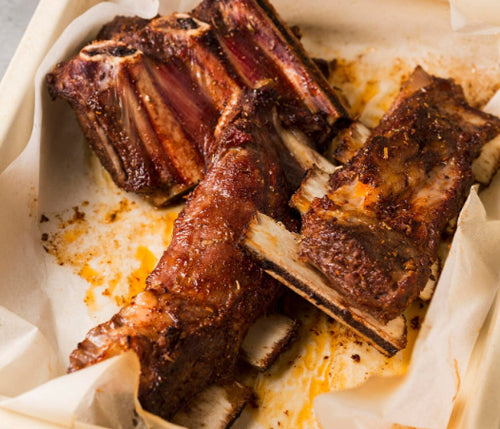
Cooked bones
Can splinter and cause internal damage

Macadamia nuts
Cause vomiting, ataxia, weakness, hyperthermia, and depression
Whether you have a small or large dog, always check ingredient labels, avoid table scraps, and consult your vet for diet recommendations tailored to your dog’s size, age, and health needs.
For a complete list of foods to avoid and why they’re dangerous, check out our dedicated guide on human foods that are toxic for dogs.
Shedding amount
Drooling
Coat grooming needs
Trainability
Mental stimulation needs
Cavoodle Grooming & Maintenance
Caring for your Cavoodle's coat can be a bit of a commitment, but it's totally worth it for those adorable fluffy looks! To keep your pup looking their best, you'll want to brush them weekly, maybe even more often if they’ve been playing hard. Plus, a professional grooming every six weeks will help keep things neat and tidy. Remember, their fur can tangle easily, which might lead to some painful mats. So, regular grooming is key to keeping your Cavoodle happy and comfortable!
Do Cavoodles Shed?
Yes, Cavoodles do shed—but minimally.
The amount a Cavoodle sheds depends on which coat type is more dominant:
- Curly coats (more like Poodles): shed the least
- Wavy coats: shed lightly to moderately
- Straight coats (more like Cavaliers): shed more noticeably
Cavoodles are often described as hypoallergenic, but no dog is truly allergy-free. Allergies are usually triggered by dander and saliva, not just shedding. While Cavoodles may be more tolerable for allergy sufferers, reactions can still occur.
Cavoodle Coat Care & Maintenance
Coat care is essential to your Cavoodle’s comfort and health. Regular grooming helps prevent mats, manage odour, and reduce skin issues.
Essential grooming tasks:
- Brushing: 3–4 times per week depending on coat type
- Bathing: Every 4–6 weeks using dog-safe shampoo
- Trimming: Every 6–8 weeks to manage length and shape
- Ear cleaning: Weekly, especially for floppy ears prone to wax build-up
- Nail trimming: Every 3–4 weeks to prevent discomfort or overgrowth
- Dental care: Daily brushing or vet-approved dental chews
Training & Exercise Needs for Cavoodle
Cavoodles require 30–60 minutes of exercise daily, which can include 1–2 short walks, indoor or backyard play, and basic training sessions. They are suitable for apartments or homes with small yards. In warmer weather, it is important to walk them during cooler hours, as Cavoodles can overheat due to their coat density.
Exercise caution should be taken to avoid overexertion in all puppies and to limit high jumps to reduce fall risks. For enrichment, ideas should be rotated daily and can include puzzle feeders, scent-based games, basic trick training, hide-and-seek, and interactive toys or dog-friendly videos. A mental engagement routine should include two sessions daily (10–15 minutes each), combining training and play to strengthen the bond.
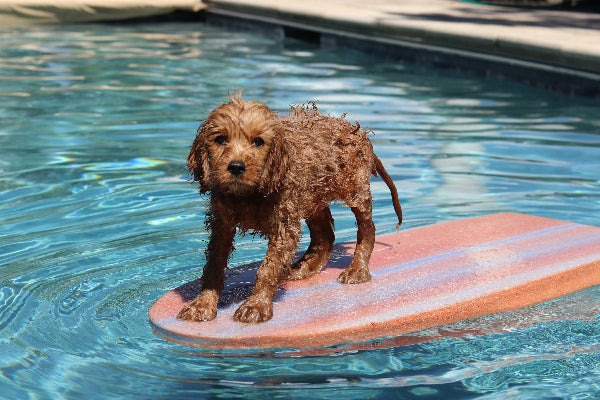
Recommended Training Methods:
Cavoodles dog respond best to positive reinforcement methods—especially verbal praise, treats, and consistency. They tend to learn quickly but may also develop attention-seeking behaviours if not properly stimulated or guided.
- Clicker training is a great way to teach new skills by rewarding good behaviour with a sound and a treat.
- Crate training helps with toilet training and gives your Cavoodle a safe space to relax.
- Routine-based reinforcement—using the same commands at the same times—builds trust and understanding.
- Avoid harsh correction. Cavoodles don’t respond well to yelling or punishment. Calm, gentle guidance works best.
Cost & Ownership Considerations
The cost of acquiring a Cavoodle in Australia varies depending on the source. From a registered breeder, the price typically ranges from $1,000 to $5,000 AUD, depending on factors such as lineage, coat type, size (Mini vs Toy), and breeder reputation. Adoption or rescue options are more affordable, usually ranging from $200 to $1,000 AUD. However, Cavoodles are rare in rescues, though they may occasionally be available through breed-specific or Poodle/Cavalier mix rescue organisations.
Cavoodles often come with a high price tag due to their status as a designer breed in high demand. Reputable breeders invest in health testing, vaccinations, worming, vet checks, microchipping and socialisation. Some may also include desexing and basic training, which all add to the cost.
Buying vs Adopting a Cavoodle
Buying from a breeder gives you a puppy with a known background, health testing, and early training—but it’s costly and requires checking breeder ethics.
Adopting from a rescue is more affordable and gives a dog a second chance, but Cavoodles are hard to find in shelters and may come with unknown health or behaviour issues.
Tip: Look into breed-specific rescues for Poodles, Cavaliers, or other small dog mixes—Cavoodles do appear occasionally.
Ask your vet or local dog clubs for reputable breeder referrals. You can also check national associations like Dogs Australia Club or breed-specific forums for recommendations.
Cavoodle Pros and Cons
Cavoodles are a popular choice for many Australian households, but it’s important to understand both the advantages and challenges of owning one. Here’s a realistic look at whether this breed is the right fit for you.
Temperament
Cavoodles have a temperament that is friendly, affectionate, and highly social, making them wonderful companions. However, they can be prone to separation anxiety when left alone for extended periods. To help manage this, it’s beneficial to use crate training, provide engaging puzzle toys, and gradually build up their ability to spend time independently.
Trainability
Cavoodles are highly trainable, as they are intelligent and eager to learn. However, they may bark if they become understimulated or bored. To manage this, it’s important to provide daily mental stimulation and consistent obedience training to keep them engaged and well-behaved.
Living Environment
Cavoodles are adaptable to various living environments, including apartments and small homes. However, they do require daily interaction and enough space to move around comfortably. To keep them healthy and happy, it's important to ensure they get 30 to 60 minutes of physical activity and regular play each day.
Grooming
Cavoodles have a low-shedding coat, which is a benefit for those looking to reduce loose hair around the home. However, they do have high grooming needs, including regular brushing and trimming. To keep their coat healthy and manageable, it’s recommended to brush them 3 to 4 times per week and schedule professional grooming every 6 to 8 weeks.
Health
Cavoodles are generally healthy when bred responsibly, making them a relatively low-risk choice in terms of overall health. However, they can inherit genetic conditions such as mitral valve disease (MVD) and hip dysplasia. To minimize these risks, it’s important to choose a reputable breeder who performs health testing on the parent dogs and to maintain regular veterinary checkups throughout the dog’s life.
Cost of Ownership
Cavoodles are ideal for first-time dog owners or families due to their friendly and manageable nature. However, owning a Cavoodle can be expensive, with costs including the initial purchase, regular grooming, and ongoing veterinary care. To manage these expenses effectively, it’s wise to plan a pet budget and consider investing in pet insurance.
Family Suitability
Cavoodles are well-suited for families, as they tend to be great with children and get along well with other pets. However, they may become clingy or overly attached if not taught to be independent. To prevent this, it's important to encourage independence from an early age and establish regular alone-time routines to help them feel comfortable when left on their own.
